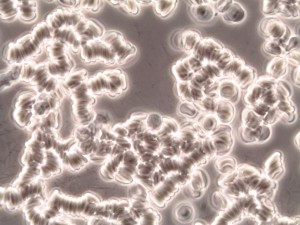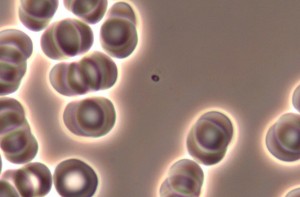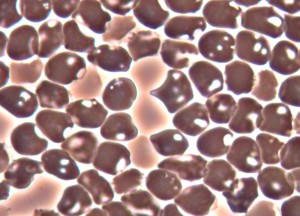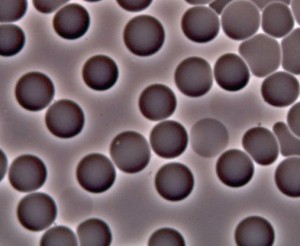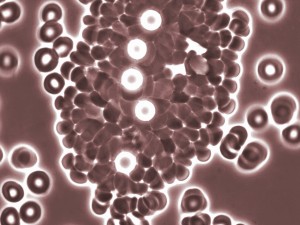There are a lot of things that we can observe in the live blood. First of all, it’s alive! Cells are 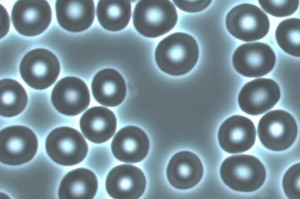 still moving and interacting. Normal blood of a healthy person has perfectly round red blood cells. They have a “dip” in the middle. They flow freely and bounce off of each other because they all are negatively charged. The plasma between them (the medium in which they are floating) is clear and free of all debris. We call these cells normocytes. Unfortunately, almost no one has blood like this. Differentiations in the shape and color of the cells, as well as presence of other possible things tells us what symptoms you may be having. However, it is a good thing! Because most of the times, we can correct the situation with simple herbal remedies before it becomes a problem.
still moving and interacting. Normal blood of a healthy person has perfectly round red blood cells. They have a “dip” in the middle. They flow freely and bounce off of each other because they all are negatively charged. The plasma between them (the medium in which they are floating) is clear and free of all debris. We call these cells normocytes. Unfortunately, almost no one has blood like this. Differentiations in the shape and color of the cells, as well as presence of other possible things tells us what symptoms you may be having. However, it is a good thing! Because most of the times, we can correct the situation with simple herbal remedies before it becomes a problem.
Fungus. It is one of the most common findings.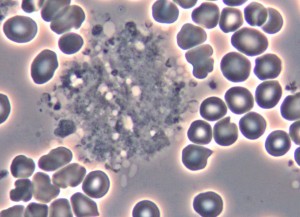 Fungus is leaking from the gut, throwing off toxins and depleting your body of vitamin B12. When in blood, it gets carried throughout your body filling in all cavities, making you feel sick. Headaches, inability to concentrate, sinus infection, insomnia, many skin conditions – these are only a few of the symptoms that it can cause. It creates a favorable environment for parasites to breed. One of the best known kinds of fungus is Candida Albicans. Herbal remedies are recommended to treat the “leaky gut” condition and to suppress the growth of fungus.
Fungus is leaking from the gut, throwing off toxins and depleting your body of vitamin B12. When in blood, it gets carried throughout your body filling in all cavities, making you feel sick. Headaches, inability to concentrate, sinus infection, insomnia, many skin conditions – these are only a few of the symptoms that it can cause. It creates a favorable environment for parasites to breed. One of the best known kinds of fungus is Candida Albicans. Herbal remedies are recommended to treat the “leaky gut” condition and to suppress the growth of fungus.
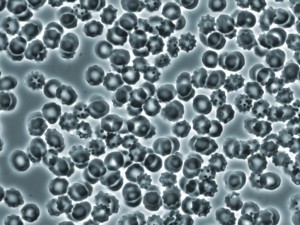 Mycoplasma is a cell wall deficient form, which makes it neither virus nor bacteria. That makes it very difficult to treat with pharmaceutical drugs. Its presence in the blood is often correlated with joint pain, inflammation of intestinal lining (Crohn’s disease), upper respiratory problems. Many so called auto-immune diseases are associated with mycoplasma. Mycoplasma can also be a co-factor in various cancers, making them agressive. Absence of the cell walls makes mycoplasma “invisible” for the immune system, and it starts attacking the tissue where mycoplasma resides.
Mycoplasma is a cell wall deficient form, which makes it neither virus nor bacteria. That makes it very difficult to treat with pharmaceutical drugs. Its presence in the blood is often correlated with joint pain, inflammation of intestinal lining (Crohn’s disease), upper respiratory problems. Many so called auto-immune diseases are associated with mycoplasma. Mycoplasma can also be a co-factor in various cancers, making them agressive. Absence of the cell walls makes mycoplasma “invisible” for the immune system, and it starts attacking the tissue where mycoplasma resides.
There are over 3000 parasites that can live in a human body.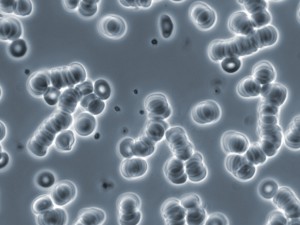 Not only do they live in the intestinal tract depleting the body of the vital nutrients and causing diarrhea, constipation and stomach ache, but also, being carried by blood to other organs of the body, they eat at myelin sheath, which protectively covers nerve tissue, interfering with nervous system function. They can be associated with migraines, asthma, diabetes, eczema, psoriasis, Parkinson’s disease to name a few.
Not only do they live in the intestinal tract depleting the body of the vital nutrients and causing diarrhea, constipation and stomach ache, but also, being carried by blood to other organs of the body, they eat at myelin sheath, which protectively covers nerve tissue, interfering with nervous system function. They can be associated with migraines, asthma, diabetes, eczema, psoriasis, Parkinson’s disease to name a few.
On the same picture you can also see rouleau – red blood cells stacked like coins. This happens as a result of stress, physical or mental, which sends an electrical circuit through the body, forcing cells to change their charge. Oppositely charged, they begin to stick together. That, in turn, may cause high blood pressure, elevated sedimentation rate, etc.
This is an extreme case of rouleau and you can see some fibrins and spicules which may indicate a congested liver.
H. Pylori – a bacteria associated with almost 90% of all cases of stomach cancer. Drs. Marshall and Warren of Australia won a Nobel prize in Medicine in 2005 for the discovery of this bacterium
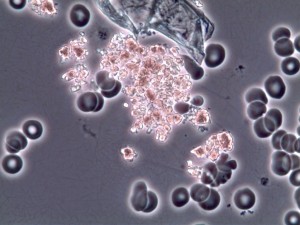 Crystals of uric acid which may be associated with gout. Due to enzyme deficiency, liver does not process fats.
Crystals of uric acid which may be associated with gout. Due to enzyme deficiency, liver does not process fats.
Reticulated red blood cells may indicate inadequate spleen function.
Spherocytosis – a condition characterized by B vitamins deficiency, especially B12. Indicates fatigue, headaches, insomnia, low energy. Usually it is a symptom of a presence of parasites, fungus, mycoplasma, etc., which feed on B12. Simple supplementation with vitamin B12 will not correct the situation.
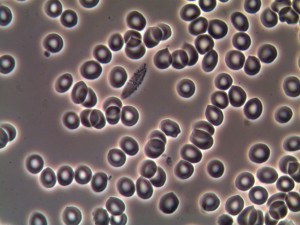
Fluke – a parasite
Erithrocyte agglutination – red blood cells sticking together may indicate stressed liver and gallstones
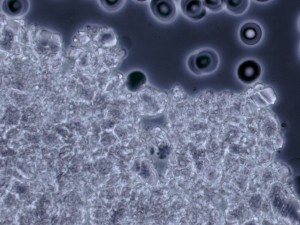
Plaque – insidious deposits of cholesterol, calcium, fats and cellular waste products that gradually build up in arteries. If left untreated, they may cause a stroke. Fortunately, simple recipes help to sweep the plaque out of the system.

